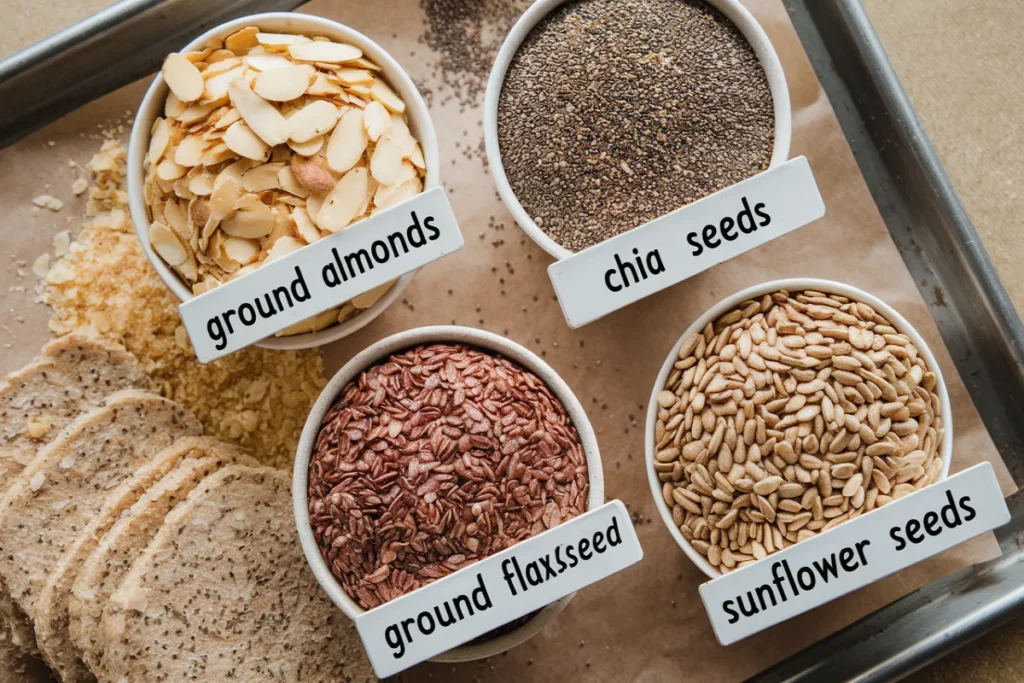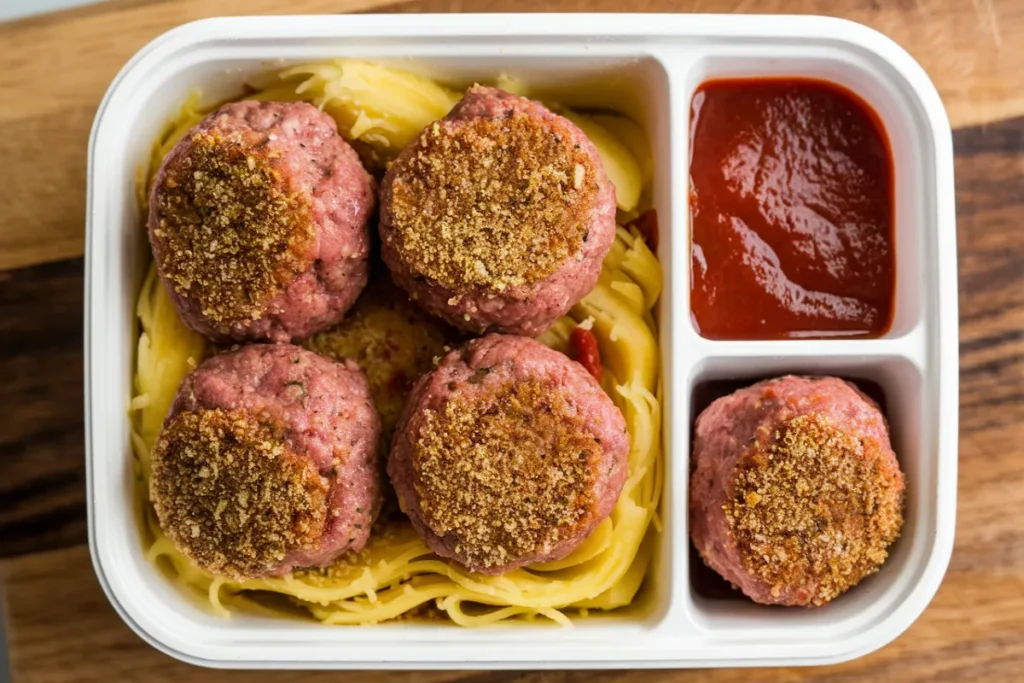Discover how to make the perfect gluten-free meatballs with this comprehensive guide. Whether you’re new to gluten-free cooking or a seasoned pro, this recipe is designed to offer a flavorful and satisfying experience without the gluten.
Introduction to Gluten-Free Meatballs Recipe
In today’s world, gluten-free diets are more popular than ever, driven by the increasing awareness of celiac disease and gluten intolerance. Meatballs, a beloved staple in many households, can easily be adapted to fit a gluten-free lifestyle. This recipe offers a step-by-step guide to crafting mouthwatering meatballs that are perfect for any occasion.
Why Choose Gluten-Free?
Choosing a gluten-free diet has several benefits, especially for those with gluten intolerance or celiac disease. Avoiding gluten can alleviate digestive discomfort, reduce inflammation, and improve overall well-being. Even for those without gluten-related health issues, a gluten-free diet can lead to healthier food choices. Learn more about the benefits of a gluten-free diet from the Celiac Disease Foundation.
The Essential Ingredients for Gluten-Free Meatballs
Creating delicious gluten-free meatballs starts with selecting the right ingredients. Here’s what you’ll need:
- High-quality meat: Choose from beef, pork, chicken, turkey, or a mix for a balanced flavor.
- Gluten-free breadcrumbs: Essential for binding the meatballs and providing texture.
- Spices and herbs: Garlic, onions, parsley, and basil are great choices.
- Eggs: Helps bind the mixture together.
- Parmesan cheese: Adds richness and flavor (optional).
Each of these ingredients plays a crucial role in ensuring your meatballs are not just gluten-free but also packed with flavor. For additional gluten-free recipes and tips, check out Gluten-Free Living.
Selecting the Right Meat for Gluten-Free Meatballs
The type of meat you choose greatly affects the texture and flavor of your gluten-free meatballs. Options include:
- Beef: Provides a rich flavor and firm texture.
- Pork: Adds moisture and a slightly sweeter taste.
- Chicken or Turkey: Leaner options that are great for a lighter dish.
- Combination of meats: Mixing different meats can create a more complex flavor profile.
When selecting meat, consider the fat content, as it helps keep the meatballs juicy and flavorful. For the best results, opt for organic or grass-fed meat whenever possible.
Gluten-Free Binders: Substitutes for Breadcrumbs

Traditional meatball recipes often rely on breadcrumbs as a binder. However, when making gluten-free meatballs, you’ll need to find a suitable substitute. Here are some popular alternatives:
- Almond flour: A low-carb, gluten-free option that adds a subtle nutty flavor.
- Gluten-free oats: Provides a heartier texture.
- Crushed gluten-free crackers: Adds a slight crunch to the meatballs.
- Ground flaxseed: A healthy option that also adds fiber.
Each of these substitutes will alter the texture slightly, so feel free to experiment to find the one that works best for you.
Additional Ingredients to Enhance Flavor
Adding a few extra ingredients can elevate your gluten-free meatballs to the next level. Consider incorporating:
- Fresh herbs: Parsley, basil, and oregano are excellent choices.
- Garlic and onions: Add depth of flavor.
- Cheese: Parmesan or mozzarella can add a rich, creamy texture.
These ingredients will not only enhance the flavor but also ensure your meatballs are anything but bland.
Step-by-Step Guide to Preparing Gluten-Free Meatballs
Now, let’s dive into the preparation process:
- Mix the ingredients: In a large bowl, combine your chosen meat, gluten-free breadcrumbs, eggs, spices, and any additional ingredients. Mix until just combined to avoid overworking the meat.
- Shape the meatballs: Use your hands or a scoop to form uniform balls. This ensures even cooking.
- Cook the meatballs: Choose between baking or frying. For baking, preheat your oven to 375°F (190°C) and cook for 20-25 minutes, turning halfway through. For frying, heat a skillet with oil and cook the meatballs until golden brown on all sides.
This simple yet detailed process guarantees that your gluten-free meatballs will turn out perfectly every time.
Cooking Methods: Baking vs. Frying
Both baking and frying have their merits when it comes to cooking gluten-free meatballs:
- Baking: A healthier option that allows the meatballs to cook evenly without added fat.
- Frying: Results in a crispy exterior and juicy interior, though it does add more calories.
Depending on your dietary goals and taste preferences, you can choose the method that best suits your needs.
Common Mistakes to Avoid When Making Gluten-Free Meatballs
Even seasoned cooks can make mistakes when preparing gluten-free meatballs. Here are a few to watch out for:
- Overmixing the meat: This can lead to tough meatballs.
- Using too little binder: Without enough gluten-free breadcrumbs or a substitute, your meatballs may fall apart.
- Overcooking: This results in dry, crumbly meatballs.
Avoiding these pitfalls ensures your meatballs are tender, juicy, and full of flavor.
Tips for Perfectly Shaped Meatballs
Creating uniformly shaped meatballs is essential for even cooking. Here’s how to do it:
- Use a meatball scoop: Ensures consistent sizing.
- Wet your hands: Prevents the mixture from sticking to your hands.
- Don’t overpack: Lightly shape the meatballs without compressing them too much.
Following these tips will help you achieve perfectly shaped gluten-free meatballs every time.
Popular Variations of Gluten-Free Meatballs
Gluten-free meatballs are incredibly versatile, allowing for endless variations:
- Italian Meatballs: Use beef or pork, and add Italian seasoning, garlic, and Parmesan cheese.
- Swedish Meatballs: Combine pork and beef, and serve with a creamy gravy.
- Asian-Inspired Meatballs: Use ground chicken or pork, ginger, garlic, and soy sauce.
Feel free to experiment with different flavors and ingredients to create your own unique twist on the classic gluten-free meatball.
Gluten-Free Meatballs in Different Cuisines
Many cultures have their own take on meatballs, and these can easily be adapted to be gluten-free:
- Middle Eastern: Use ground lamb and spices like cumin and coriander.
- Greek: Try ground beef or lamb with mint, garlic, and feta cheese.
- Mexican: Add spices like cumin, chili powder, and cilantro for a bold flavor.
Exploring these global variations can add excitement to your gluten-free meals.
Serving Suggestions for Gluten-Free Meatballs
Gluten-free meatballs can be served in a variety of ways:
- Over gluten-free pasta: A classic pairing.
- With zoodles: For a low-carb option.
- As an appetizer: Serve with toothpicks and a dipping sauce.
These serving suggestions make it easy to enjoy meatballs at any meal.
How to Make a Gluten-Free Meatball Sauce
A delicious sauce can elevate your gluten-free meatballs to new heights. Here’s a simple recipe:
- Tomato-based sauce: Combine crushed tomatoes, garlic, onion, and Italian herbs. Simmer until thickened.
- Creamy sauce: Use gluten-free flour or cornstarch to thicken a sauce made with cream and broth.
- Spicy sauce: Add chili flakes or sriracha for a kick.
These sauces can be customized to suit your taste preferences and pair well with different meatball variations.
Gluten-Free Meatballs for Meal Prep

Gluten-free meatballs are perfect for meal prep. Here’s how to prepare them in bulk:
- Double or triple the recipe: Make a large batch to freeze for future use.
- Freeze before or after cooking: Raw meatballs can be frozen on a baking sheet and then transferred to a bag. Cooked meatballs should be cooled before freezing.
- Reheat in the oven: This helps maintain their texture without drying them out.
Meal prepping with gluten-free meatballs makes it easy to have a healthy, delicious meal on hand at any time.
Storing and Reheating Gluten-Free Meatballs
Proper storage and reheating are crucial to maintaining the quality of your gluten-free meatballs:
- Refrigerate for up to 3 days: Store in an airtight container.
- Freeze for up to 3 months: Use freezer-safe bags or containers.
- Reheat in the oven or on the stove: Avoid microwaving, as it can make the meatballs tough.
Following these guidelines ensures your meatballs stay fresh and tasty.
Pairing Gluten Free Meatballs Recipe with Sides and Wines
To complete your meal, pair your gluten-free meatballs with these sides and wines:
- Sides: Consider gluten-free pasta, roasted vegetables, or a fresh salad.
- Wines: A red wine like Chianti or a white like Pinot Grigio can complement the flavors of your meatballs.
These pairings create a balanced, satisfying meal that’s perfect for any occasion.
FAQs For Gluten Free Meatballs Recipe
- What can I use instead of breadcrumbs in gluten-free meatballs?
- Almond flour, gluten-free oats, or crushed gluten-free crackers are great substitutes.
- Can I freeze gluten-free meatballs?
- Yes, you can freeze them either before or after cooking for up to 3 months.
- How do I keep gluten-free meatballs from falling apart?
- Ensure you’re using enough binder, such as gluten-free breadcrumbs or eggs.
- Are all meatballs gluten-free?
- Not necessarily; it depends on the ingredients used, especially the breadcrumbs.
- What are some gluten-free sauces that go well with meatballs?
- Tomato-based, creamy, and spicy sauces are all excellent choices.
- Can I make gluten-free meatballs without eggs?
- Yes, you can use flaxseed meal or chia seeds as a binder instead of eggs.
Conclusion
This gluten free meatballs recipe offers a delicious, easy way to enjoy a classic dish without the gluten. By choosing the right ingredients, avoiding common mistakes, and experimenting with different variations, you can create a meal that’s both satisfying and healthy. Whether you’re serving them over pasta, as an appetizer, or preparing them for meal prep, these meatballs are sure to become a favorite in your gluten-free kitchen. Enjoy your cooking!

